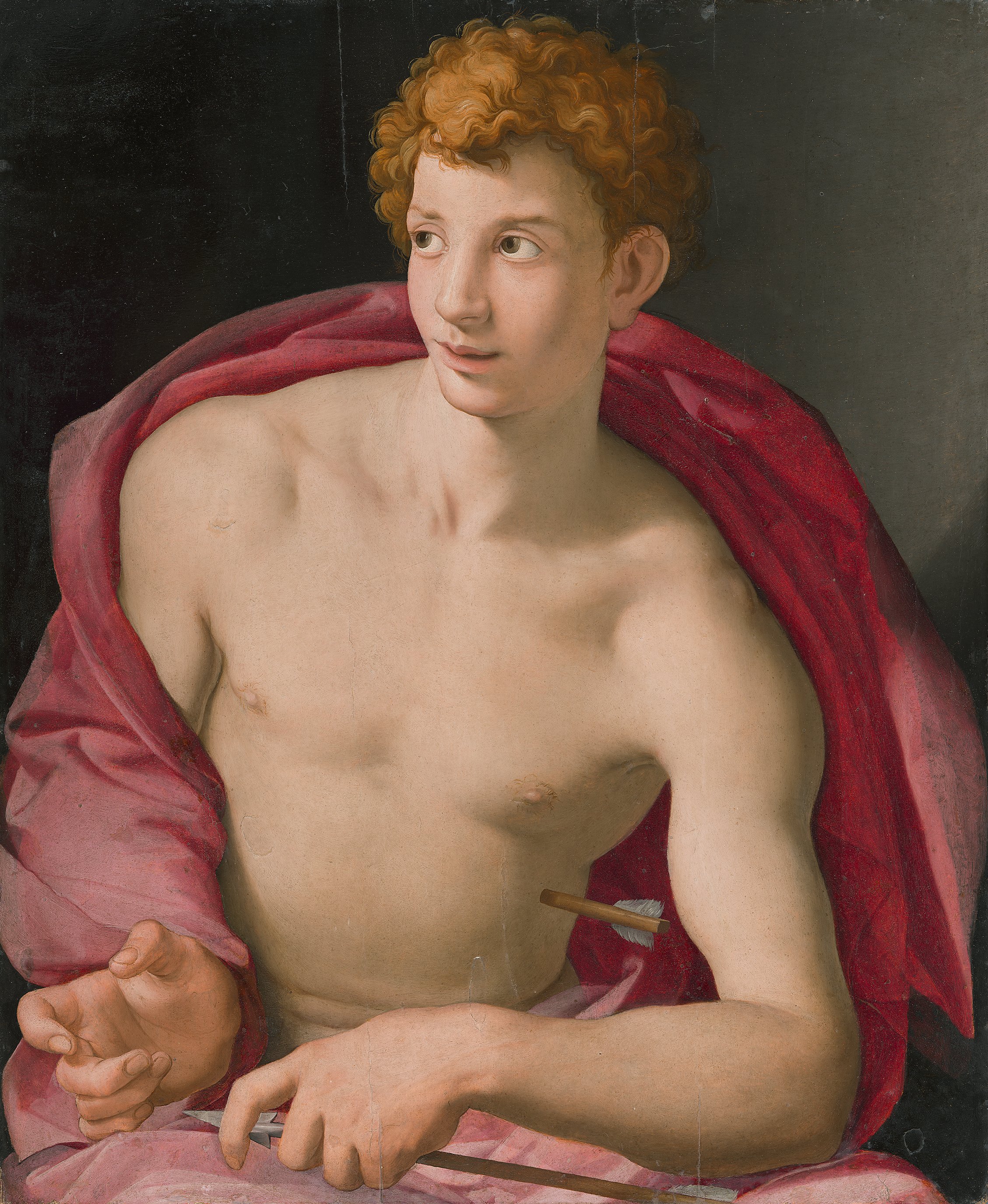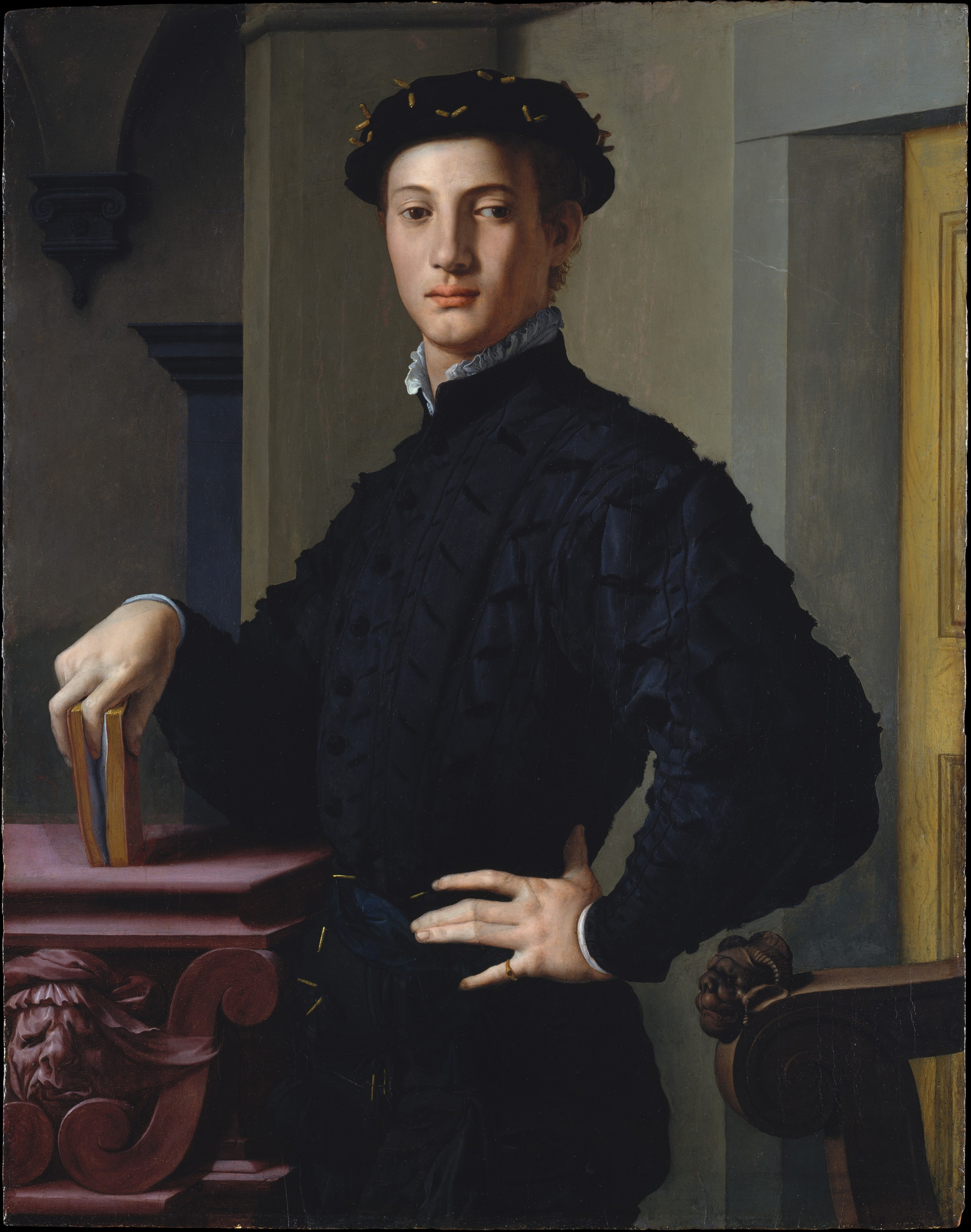Agnolo di Cosimo di Mariano Tori, known as Bronzino, was one of the leading artists of Florentine Mannerism. This painting depicting Saint Sebastian, a martyr killed by arrows, is a good example of how depictions of the saint evolved towards physical embellishment. Iconographically speaking, Bronzino’s Saint Sebastian belongs to a devotional type found chiefly in northern and central Italy in which the saint is depicted half-length and naked or wearing a loincloth, interceding for the plague-stricken. Significantly, Florence was ravaged by plague between 1529 and 1530, and there is speculation whether this work may have been commissioned as an expression of gratitude when the outbreak died out.
Bronzino’s picture, however, was painted to be shown privately in the homes of the nobility, who, like the artists of the period, practiced and cultivated humanistic and Neoplatonic ideals. Works of this kind gave shape to the homoerotic interpretation of the Renaissance Saint Sebastian focused on his physical splendor.
The Renaissance biographer Giorgio Vasari described Bronzino and his master Pontormo as inseparable and many scholars point out that although Pontormo adopted Bronzino (a practice that was not unusual among painters and apprentices), their relationship was much more than one of filial love. Bronzino, who lived with his master for years, benefiting from his trust and working in his studio, also had a poetic side and dedicated heartfelt sonnets to Pontormo when he died in 1557, calling him a "father" and "friend." Pontormo referred to him with pet names such a "Bro" or "Bronzo" in his private diary. In 1552, a few years before Pontormo passed away, Bronzino in turn adopted one of his own pupils, Alessandro Allori, showing that the system of artistic apprenticeship was also an outlet for homosocial affection, as we also find in the case of Donatello, who, according to spiteful tongues, chose his apprentices for their beauty; or Cellini, who in 1557 was accused of sodomy for being caught with his assistant, Fernando da Montepulciano, "in bed as if he were his wife."
We present today's work thanks to the Museo Nacional Thyssen-Bornemisza in Madrid. While visiting this amazing collection, you can join the Inclusive Love tour organized by the museum, which offers a different gaze on the collection to focus on concepts such as identity and sexual orientation.
P.S. Do you know why Saint Sebastian became a gay icon?
P.P.S. Well, this year we decided to extend our Black Friday promos a little, which means that you can get everything we offer a bit cheaper. It means that:
- You can get all our 2023 calendars and planner, socks, notebooks, and postcards for -25%.
- You can get all our online DailyArt Courses about art history for -25%.
- DailyArt PRO costs $1.99 instead of the usual $5.99. If you're not already PRO, just tap the "Get premium features" button below to get the promo. :)
Please keep in mind that everything you buy from us is a huge financial support for us, which bring us closer to reaching our ultimate goal of developing the new DailyArt app (learn more about it). Thank you!


 Agnolo Bronzino
Agnolo Bronzino